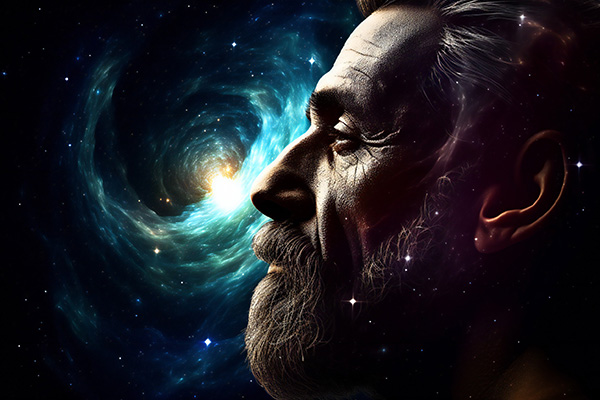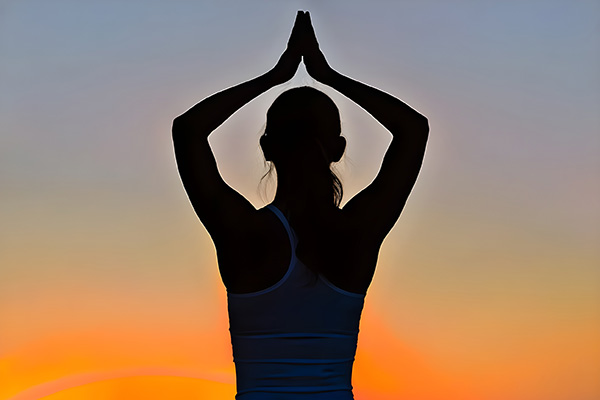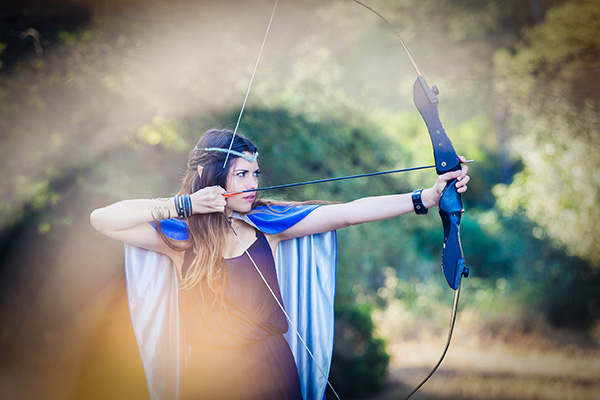Mysticism
My Spiritual Encounter With A Bear
 Imagine venturing deep into the forest, sunlight streaming through the ancient trees. The air is crisp, alive with the gentle whispers of nature. Suddenly, a colossal bear emerges from the underbrush, its presence a primal force in the serene scene.
Imagine venturing deep into the forest, sunlight streaming through the ancient trees. The air is crisp, alive with the gentle whispers of nature. Suddenly, a colossal bear emerges from the underbrush, its presence a primal force in the serene scene.
Well, chances are this isn’t just another wildlife encounter – it’s a potentially powerful spiritual experience, imbued with profound symbolism.
My psychic mentor and I once had such a remarkable encounter with a bear that brought me some deep spiritual insights.
The forest has always been a happy place for me, and for this particular long-term retreat, I rented a cabin in the Great Smoky Mountains National Park in Gatlinburg, Tennessee. One crisp fall evening, while my friend was visiting me and we were enjoying the tranquility of twilight on the back porch, a large black bear wandered into the back yard.
At first, we were both gripped with fear. Seeing such a powerful creature up close is both awe-inspiring and very intimidating! Fortunately, the bear paid us little attention as he calmly foraged for food, his movements deliberate and unhurried.
After the initial shock, we found ourselves mesmerized by his presence. I am always on the lookout for signs and synchronicities from the universe. Decades of spiritual work have taught me that nothing is accidental or random, especially when you are in the wilderness.
From Ancient Mystics To Modern Psychics
 Psychics and mediums have been around since the dawn of human civilization: from the shamans in indigenous cultures, to the oracles of ancient Greece and Rome, the seers and druids of Celtic societies, the sages of ancient China, and the prophets of ancient Middle Eastern cultures.
Psychics and mediums have been around since the dawn of human civilization: from the shamans in indigenous cultures, to the oracles of ancient Greece and Rome, the seers and druids of Celtic societies, the sages of ancient China, and the prophets of ancient Middle Eastern cultures.
Some famous examples include Pythia, the Oracle of Delphi in ancient Greece; the Celtic soothsayer Myrddin Wyllt, also known as Merlin in later Arthurian legends; the Chinese wu (shaman) Jing Fang; Black Elk, the renowned Native American holy man of the Oglala Lakota Sioux people; Isaiah, the renowned prophet of the ancient Near East; and Agastya, the revered Hindu sage and seer.
Throughout human history, in different cultures and societies, there have always been individuals with mystical abilities who held important roles within their communities and served as intermediaries between the physical world and spiritual realms.
They served as conduits of divine wisdom, predicting future events, providing insight into hidden truths, and offering guidance on various matters. They often acted as special advisors to tribal leaders, rulers, and kings, and typically played an important role in the moral and spiritual direction of their people.
The term “psychic” comes from the Greek word psychikos, meaning “of the soul, spirit, or mind.” In Greek mythology, Psyche was the goddess of the soul. Her name literally means “soul” or “breath.” Over time, the term came to encompass aspects of the mind beyond the ordinary.
Unleash The Power Of Your Intention
When I first started working professionally in the spiritual field, I used to get pretty uptight about whether or not I was spending enough time preparing myself properly before consulting with clients, both for psychic readings and energy healing sessions. That was until I visited a well-known elderly spiritualist who lived in the countryside outside of Johannesburg, South Africa, for a reading.
“You work with spirit, just like I do,” I remember him saying. “But I sense that you worry that your preparation is weak and not good enough.”
He was right, I was often stressed about having enough time to prepare with my guides before the sessions began. I always want to give my best to my clients and feared that I would disappoint them if I was not properly prepared and perfectly “tuned in.” Was I doing it right? Did I spend enough time on it? Was I leaving out an important step? Should I just do it once a day before I start or before every single session?
Ironically, while my sincere intention with all this worrying was to give my clients the best readings and healings possible, I was actually not always giving my best, because I was so stressed and worried about being well-prepared!
“All you have to do is set your intention clearly every day before you start,” the wise old gentleman said. It was like a weight was lifted off my shoulders. Of course! Keeping it simple is often the best approach to most things in life, so why should it not work in spiritual endeavors also?
This was how I learned that the most important ingredient for successful preparation in any spiritual practice or metaphysical activity is intention. Today, I like to think of intention as the vital spark that lights the flame. It is a powerful tool in all metaphysical practices. Oddly enough, intention is often the key aspect of our spiritual practices that is most often overlooked.
Enhance Your Spiritual Practice With Rune Yoga
 As a professional psychic advisor, my days are filled with interpreting runes, connecting with energies, and guiding others through their life challenges and spiritual journeys.
As a professional psychic advisor, my days are filled with interpreting runes, connecting with energies, and guiding others through their life challenges and spiritual journeys.
To restore my own energy, maintain my inner balance, and ensure my holistic well-being, I engage in various spiritual self-care practices that nourish my own mind, body, and soul.
One of my favorite pursuits used to be traditional Indian yoga, until I discovered its Norse-Germanic counterpart known as Rune Yoga, Rune Standing, Rune Stances or Runic Postures.
Rune yoga is an ancient practice that essentially blends the ancient wisdom of the runes with the holistic benefits of similar mind-body traditions such as yoga, tai chi, qigong, pilates, and aikido.
Traditional yoga has always been a sanctuary for me, a place to reconnect with my body and mind.
But as I became so deeply immersed in the world of runes for my work, I found my way to rune yoga as an alternative practice that felt like a natural extension of my interests and professional experience.
Runes are the letters in a set of related alphabets, known as the runic alphabet, that were used to write various Germanic languages before the adoption of the Latin alphabet.
They were used primarily in Northern Europe, Scandinavia, the British Isles, and Iceland from about the 2nd to the 17th centuries. The word “rune” itself comes from the Old Norse word rún, meaning “secret” or “mystery,” underscoring their mystical and symbolic significance in ancient times.
Accessing Your Own Akashic Record
 The ability to access the Akashic Records is traditionally considered a special gift that only a select few prophets or gurus are privy to. It is often mistakenly considered an esoteric practice that only the spiritually advanced or those of us with unique mystical abilities can perform.
The ability to access the Akashic Records is traditionally considered a special gift that only a select few prophets or gurus are privy to. It is often mistakenly considered an esoteric practice that only the spiritually advanced or those of us with unique mystical abilities can perform.
However, this outdated perception is rapidly changing. The modern spiritual landscape embraces the understanding that, with some dedication and practice, anyone can learn to access their own Akashic ‘file.’ This shift is rooted in the notion that these records are not exclusive, but universal.
The records are a karmic birthright, freely available to all who seek to access them with sincere intentions and an open mind, for the simple reason that having free access to one’s own karmic “data” is beneficial to your soul evolution.
The concept of the Akashic Records has fascinated mystics, spiritual seekers, and esoteric scholars for centuries. Rooted in various religious and spiritual traditions, it is described as a universal compendium of all events, thoughts, words, emotions, and intentions that have ever occurred in the past, present, or future.
This metaphysical “library” or “database” exists in the non-physical and underlies the universal field of consciousness and our entire existence. In Sanskrit, the term Akasha (आकाश) is derived from the root word kas, which means “to radiate,” “to shine,” or “to be visible.” The prefix “a” intensifies or negates the root meaning, giving “Akasha” various interpretations such as “ether,” “space,” or “sky.” In Hindu philosophy Akasha is considered one of the five elements that make up the physical world.


